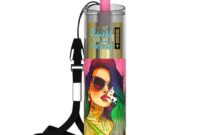Overview of Shopping Comfort Zones: Shop Comfort Zone Best Price 2025
Shopping comfort zones refer to the familiar environments and purchasing behaviors that consumers feel most at ease within. These zones are shaped by personal experiences, preferences, and psychological factors that influence a consumer’s purchasing decisions. In 2025, understanding how these comfort zones operate is essential for brands aiming to cater to diverse consumer needs effectively.
The psychological aspects contributing to shopping comfort zones include familiarity, trust, and perceived value. Consumers are generally drawn to environments where they feel safe and understood, which enhances their willingness to make purchases. Staying within these comfort zones allows consumers to avoid the anxiety often associated with new products or unfamiliar shopping experiences. As such, these zones can foster brand loyalty and increase customer satisfaction, leading to repeated business in 2025.
Identifying the Best Price for 2025
Determining the best price for products involves various methodologies that can enhance consumer value perception. Pricing strategies must consider market trends, consumer behavior, and competitive analysis to make informed decisions.
- Conduct comparative analysis across different platforms to evaluate price variations.
- Utilize price tracking tools that monitor changes and alert consumers to deals.
- Assess market demand and supply dynamics to better understand pricing strategies.
For consumers in 2025, a checklist for evaluating pricing trends includes:
- Identifying reputable vendors known for fair pricing.
- Comparing product reviews to gauge overall satisfaction relative to price.
- Keeping track of seasonal sales and promotional events.
Factors Influencing Shopping Comfort Zones
Demographic factors play a crucial role in shaping shopping comfort zones. Age, income level, and lifestyle preferences significantly affect how individuals approach shopping experiences. Younger consumers may gravitate towards online shopping platforms, while older demographics often favor traditional in-store experiences.
Social influences, including peer recommendations and cultural norms, additionally impact consumer purchasing decisions. The prevalence of social media has amplified these influences, often swaying opinions and creating trends that resonate with specific demographics.
Technology is a double-edged sword in this context; while it can expand shopping comfort zones by providing access to a wider variety of products and services, it can also limit them by overwhelming consumers with choices. Understanding these dynamics is essential for brands seeking to navigate the evolving landscape of consumer behavior in 2025.
Strategies to Maximize Value in Shopping Comfort Zones
Negotiating better prices is a key strategy for maximizing consumer value. Effective negotiation techniques involve understanding market value and employing persuasive communication to reach favorable outcomes.
Loyalty programs also enhance shopping comfort by providing incentives for returning customers. These programs offer rewards that can motivate consumers to remain within familiar purchasing patterns, thus reinforcing their comfort zones.
Effective budget management techniques empower consumers to make informed purchasing decisions. For instance, utilizing expense tracking applications helps consumers stay within their financial limits while maximizing their shopping experiences in 2025.
Trends in Shopping Comfort Zones for 2025
Emerging trends are set to reshape shopping comfort zones significantly. The growing emphasis on sustainability is influencing consumer purchasing decisions, leading many to favor brands that demonstrate corporate responsibility. This shift highlights an increasing awareness of environmental impacts on purchasing behavior.
Technological advancements are another critical factor reshaping consumer behavior. Innovations such as augmented reality (AR) and artificial intelligence (AI) are enhancing shopping experiences by providing personalized recommendations and creating immersive environments that draw consumers into their comfort zones.
As these trends evolve, brands must adapt their strategies to meet the changing expectations of consumers in 2025.
Case Studies of Successful Shopping Comfort Zone Strategies, Shop comfort zone best price 2025

Several brands have effectively catered to shopping comfort zones, demonstrating successful strategies. For instance, companies that offer hybrid shopping experiences—combining online and in-store elements—have seen increased customer satisfaction. Brands that provide seamless returns and exchanges also enhance consumer trust and loyalty.
Success stories from consumers reveal that those who actively engage and optimize their shopping comfort zone often achieve better pricing and experience. By leveraging tools and techniques for price comparison, consumers have reported significant savings and enhanced satisfaction.
Conversely, lessons from failed consumer experiences highlight the risks associated with ignoring comfort zones. Brands that pushed consumers too far outside their established preferences often faced backlash and loss of customer loyalty.
Utilizing Online Tools for Pricing and Comfort
A variety of online tools and resources assist consumers in finding the best prices. Price comparison websites allow users to evaluate options across multiple vendors, ensuring they make informed choices.
Mobile applications also play a vital role in enhancing the shopping comfort zone experience. These apps often provide personalized recommendations, discounts, and alerts on price drops, making shopping more efficient and enjoyable.
To effectively utilize online tools for shopping, consumers can follow these steps:
- Research and download reputable price tracking apps.
- Set alerts for desired products to catch deals as they arise.
- Engage with online communities to share insights on pricing strategies.
The Future of Shopping Comfort Zones
The evolution of shopping comfort zones over the next decade may lead to significant changes in consumer behavior. As technology continues to advance, consumers will likely experience more personalized and automated shopping experiences, enhancing comfort but potentially reducing personal engagement with brands.
Challenges may arise as consumers navigate an increasingly complex retail landscape characterized by rapid technological changes and shifting market dynamics. Adapting to these changes will require resilience and flexibility from both consumers and brands alike.
Strategies for consumers to adapt include staying informed about emerging trends and continuously evaluating their purchasing habits in light of new technologies and market conditions. By doing so, consumers can ensure that their shopping experiences remain both comfortable and rewarding.


